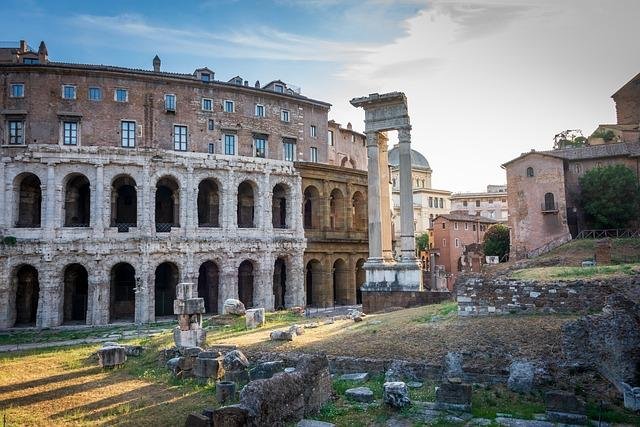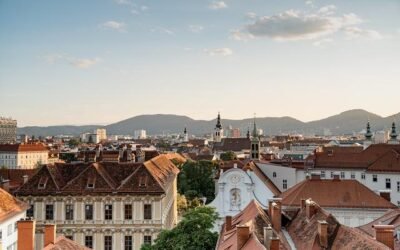Are you an avid traveller with a passion for learning? Rome is frequently enough celebrated for its ancient ruins, breathtaking art, and appetizing cuisine—but did you know it’s also a treasure trove of educational landmarks? From age-old universities and storied libraries to ancient schools and scientific institutes, Rome offers a unique journey through the past and present of learning. In this guide, we’ll explore the top 10 educational stops in Rome, perfect for students, history lovers, academic travellers, and lifelong learners alike.
Why Choose Rome for an Educational Travel Itinerary?
Rome’s educational heritage spans millennia, making it the ideal destination for anyone interested in universities, historic schools, and remarkable places where learning has shaped history. Here, you’ll discover:
- Some of the world’s oldest universities and academies
- Renowned libraries housing ancient manuscripts
- Scientific landmarks connected to iconic thinkers
- Art schools and music conservatories with global impact
- Historical sites with educational significance
Let’s jump into the 10 must-visit educational stops in Rome for an enriching, memorable, and informative travel experience.
1. Sapienza University of Rome
Founded in 1303, the Sapienza University of Rome is one of the world’s oldest and most prestigious universities. It has produced Nobel Laureates, influential scientists, politicians, and artists. The campus itself is an architectural blend of history and modernity, and the university’s museums, such as the museum Network, offer insights into anthropology, physics, and history of medicine.
- Highlight: Walking the halls where Galileo and other great minds once treaded.
- Tip: Check their official event calendar – you might catch a public lecture or exhibition.
2. Accademia di San Luca
Founded in the 16th century, the academy of Saint Luke was established to elevate the work of painters, sculptors, and architects. It’s considered Italy’s oldest academy of fine arts and was a beacon for renaissance and Baroque artists.Today, it boasts a rich collection of drawings, paintings, and architectural designs.
- Highlight: Explore works by Bernini, Raphael, and other iconic figures in art history.
- Location: Piazza dell’Accademia di San Luca, right in rome’s historic center.
3. Vatican Apostolic Library
The Vatican Library isn’t just for theologians and scholars—it’s one of the oldest libraries in the world, renowned for its collection of manuscripts, incunabula, and documents that date as far back as the fourth century. While access for casual tourists is limited, special exhibitions are periodically open to the public, offering a peek into a millennia of academic heritage.
- Highlight: View illuminated manuscripts and rare books that have shaped science, literature, and religion.
- Insider Tip: When open to public, spots fill up fast—check the website before your trip!
4. Liceo Classico T. Tasso
Founded in the early 19th century, Liceo Classico Torquato Tasso is one of the most prestigious secondary schools in Italy, famous for its rigorous curriculum rooted in humanities, classical studies, and philosophy. Alumni include leading italian intellectuals and politicians.
- Highlight: The historical building reflects the grandeur of traditional Italian education.
- Best for: Those interested in European school systems and historic educational philosophies.
5. Accademia Nazionale dei Lincei
Founded in 1603, this academy is Italy’s oldest scientific institution. Galileo galilei himself was a member. The academy promotes science and intellectual collaboration, and its headquarters—Palazzo Corsini—hosts exhibitions and lectures.
- Highlight: Their library and scientific heritage collections are sometimes accessible during events.
6. University of Rome Tor Vergata
Home to cutting-edge research in economics, engineering, and medicine, Tor Vergata is a modern addition to Rome’s academic scene. It’s known for its innovative research centers, international collaborations, and stunning campus just outside the city center.
- Highlight: Public conferences, science festivals, and the Sustainable Campus initiative.
7. Santa Cecilia Conservatory
Music lovers should not miss the Conservatorio di Santa Cecilia,established in 1585. It’s one of the most renowned music schools globally,nurturing generations of italian maestros in classical and contemporary music.
- Highlight: attend student and faculty concerts, open to the public throughout the year.
8. Palazzo Altemps and the National Roman Museum
Once home to scholars and aristocrats, Palazzo altemps is now part of the National Roman Museum and hosts significant classical art and archaeological exhibitions. It is also affiliated with educational programs and guided tours focusing on ancient Roman schooling,scripts,and learning traditions.
- Highlight: Themed tours about education in Ancient Rome.
9.Museum of Physics and Natural History (Museo di Fisica e Storia Naturale)
Located within Sapienza University, this museum is a tribute to scientific revelation in italy. It features historical scientific instruments, interactive exhibits, and educational activities for visitors of all ages.
- Highlight: See early inventions, scientific tools, and demonstrations that changed our understanding of the world.
10. Società Dante Alighieri
Founded in 1889,this society promotes Italian language and culture worldwide. Its headquarters in Rome is a hub for academic conferences, Italian language courses, and cultural exhibitions—perfect if you wish to combine travel with a short-term study program.
- Highlight: Participate in an intensive Italian language workshop during your trip.
Benefits of exploring Educational Landmarks in Rome
- Immersive Learning: Go beyond textbooks by experiencing centuries-old educational environments.
- Academic Inspiration: Stand where historical figures studied, researched, and created masterpieces.
- Diverse Itinerary: Combine your love for history,art,science,and language in one travel plan.
- Networking Possibility: Engage with students, educators, and fellow travellers through special events.
Practical Tips for educational Travel in Rome
- Plan Ahead: Many institutions require advance booking or have limited public access. Always check their official websites before visiting.
- Combine Visits: Group sites by neighborhood or thematic interest—many are within walking distance.
- look for Public Events: Universities and academies often host guest lectures, open days, and festivals.
- pack Your Curiosity: Some museums and libraries allow you to see rare books and artifacts—don’t miss the chance to ask questions or join a guided tour.
First-Hand Experience: Following in the Footsteps of Rome’s Scholars
Walking into the courtyard of Sapienza, you can almost hear the echoes of countless conversations and debates that shaped European thought.Visiting the Vatican Library is a humbling reminder of humanity’s relentless quest for knowledge, while a music concert at Santa cecilia is a festivity of the enduring power of education and culture. Every educational landmark in rome has a story to tell—open your mind and let the city be your classroom.
Conclusion: Make Your Next Rome Itinerary an Educational Adventure
Whether you’re a student, a history buff, or a lifelong learner, Rome’s educational attractions promise a travel experience like no other. From the grandeur of sapienza and Tor Vergata to the storied classrooms of Liceo Tasso and the ancient halls of the Vatican Library, these 10 educational stops in Rome will enrich your journey and inspire your curiosity.
Pack your notebook, prepare your questions, and let the Eternal City’s universities, schools, and historical learning landmarks guide you through the timeless pursuit of knowledge. Buon viaggio!








0 Comments